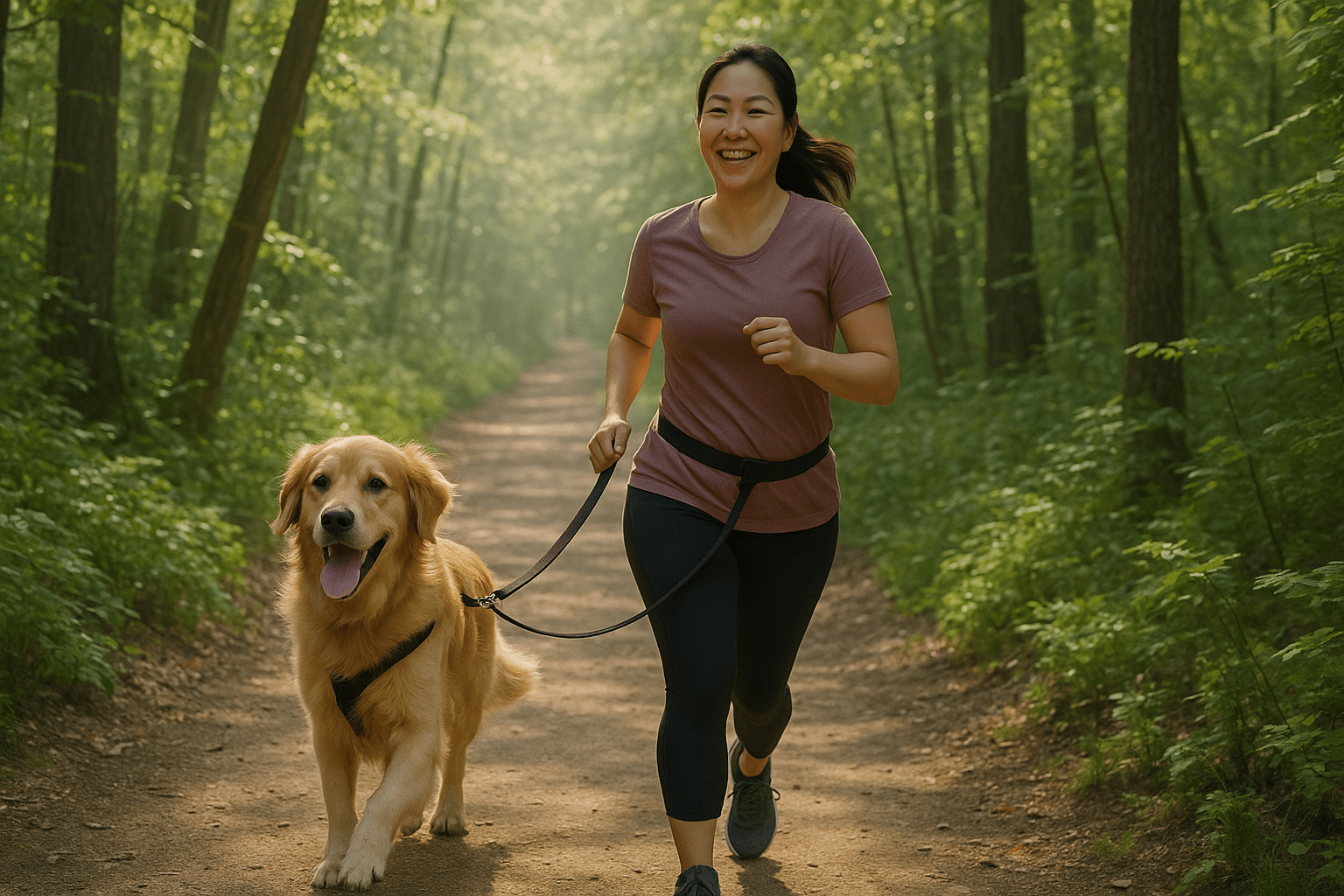Your Best Running Buddy Has Four Legs
There’s nothing quite like the excited tail wag of your dog when you lace up your running shoes. The eager eyes. The bounce at the door. Dogs don’t need a motivational podcast or a race medal—just the chance to be outside with you.
Running with your dog can be one of the most rewarding and bonding experiences—for both your physical health and your relationship. But it’s not as simple as clipping on a leash and hitting the pavement. To make it safe and fun, there are a few key things to know.
Whether you’re dreaming of trail runs with your retriever or easy jogs with your terrier, this guide will help you get started—smartly, safely, and joyfully.
Is Your Dog Ready to Run?
Age, Breed, and Health Considerations
Not all dogs are born runners. Before you start training together, ask yourself:
- Is your dog old enough? Puppies’ joints are still developing, so avoid distance running until your dog is at least 12–18 months old (breed dependent).
- What’s your dog’s breed and build? Sporting and herding breeds (like Labs, Border Collies, Vizslas) often make great partners. Short-nosed breeds (like Bulldogs or Pugs) may struggle with breathing, especially in heat.
- Does your dog have any health issues? Joint problems, heart conditions, or obesity can all affect a dog’s ability to run safely.
When in doubt, check with your vet.
Vet Checks and Conditioning
Before logging miles together, schedule a checkup. Your vet can clear your dog for running and help spot early warning signs of strain.
Then, just like you wouldn’t run a 10K on day one, your dog shouldn’t either. Start slow. Build distance and stamina gradually.
Training Your Dog to Be a Great Running Partner
Leash Manners and Obedience
Running is a team sport—and a well-trained dog makes it much more enjoyable.
Your dog should know and consistently respond to:
- Heel
- Leave it
- Wait
- Come
- Easy (slow down)
Practice walking calmly on a loose leash before introducing running. A sudden squirrel chase can be dangerous mid-run.
Tip: Practice short jogs in a quiet park before hitting busier roads or trails.
Pacing and Building Distance Gradually
Dogs don’t understand pacing the way humans do. They might sprint early and tire quickly.
- Start with 1–2 miles, mixed with walking.
- Increase weekly mileage by no more than 10%.
- Watch your dog’s breathing, gait, and enthusiasm. If they lag, limp, or seem overheated—stop.
Consistency builds stamina. And always, always finish on a positive note.
The Best Gear for Running with Your Dog
Harnesses, Leashes, and Waist Belts
Ditch the retractable leash. For running, you want:
- No-pull or front-clip harnesses (better control, less choking)
- Hands-free leash systems (waist belts offer stability)
- Traffic handles near the dog for quick control at intersections
Avoid neck collars on runs—especially for strong pullers or speed bursts.
Collapsible Bowls and Dog Hydration
Dogs don’t sweat like humans—they pant to cool off. That makes hydration essential.
Bring:
- A collapsible water bowl
- A squeeze bottle to squirt into your hand or the bowl
- Extra water on warm days or trail runs
Offer water every 20 minutes during runs. And bring more than you think you’ll need.
Weather, Surfaces, and Safety Tips
Heat, Humidity, and Cold Considerations
Dogs overheat faster than humans. When in doubt, don’t go out.
Too hot: If it’s over 75°F (24°C) with humidity, rethink your run—especially midday. Flat-faced breeds are at even greater risk.
Too cold: Most medium-to-large dogs can tolerate short runs down to 20°F (-6°C), but check for signs of paw discomfort or shivering.
Ideal range: 40–65°F (4–18°C) is perfect for most dog-friendly runs.
Paw Care and Road Hazards
Asphalt heats quickly in the sun. Test it: if you can’t keep your palm on the pavement for 5 seconds, it’s too hot for paws.
Also watch for:
- Salt and de-icers in winter
- Broken glass or sharp gravel
- Thorns or ticks on trail runs
Use paw balms or dog booties if needed—and check paws post-run.
Making It Fun: Adventure Routes, Play Breaks, and More
Mixing Up Your Routes and Activities
Your dog gets bored too. Spice things up with:
- Off-road trails (softer on joints)
- Loops around dog-friendly parks
- Urban routes with pet-friendly stops
- “Sniff breaks” to let your dog explore for a few moments
Variety keeps them engaged—and you both happier.
Post-Run Cooldowns and Rewards
Just like humans, dogs need to cool down after activity.
- Walk the last 5–10 minutes of your route
- Offer water and light stretching (yes, dog yoga is a thing)
- Praise, petting, and a treat go a long way
These rituals help your dog associate running with joy—not exhaustion.
Stronger Together, Mile by Mile
Running with your dog isn’t just about fitness—it’s about friendship, routine, and shared exploration. Your pup doesn’t care about your pace, your distance, or your split times. They just love being with you, stride for stride.
So start slow, stay safe, and make it fun. Because when you run with your dog, you’re not just building endurance—you’re building a bond that lasts far beyond the miles.






Leave a Reply